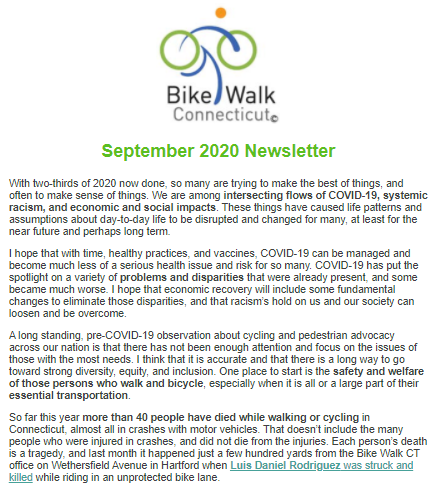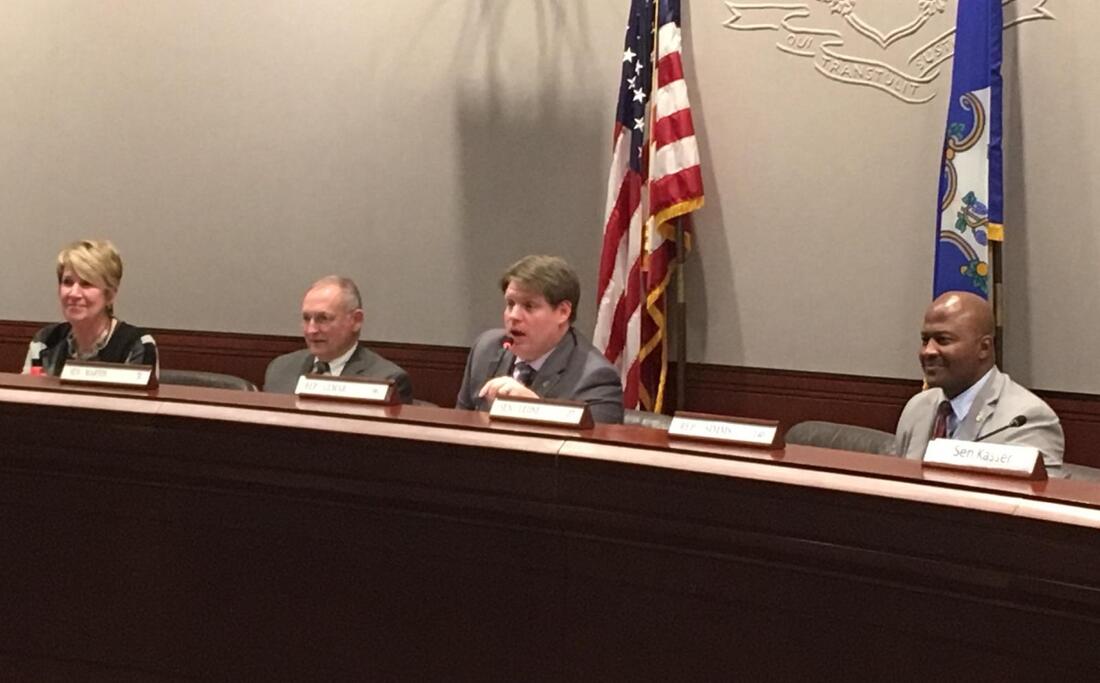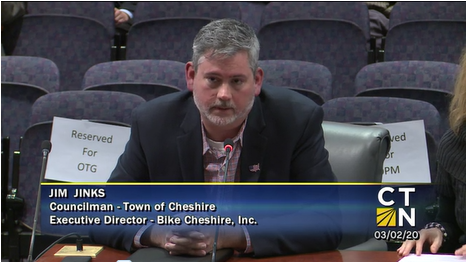|
When it comes to hiking, Connecticut may not be the first state that comes to mind for those who don't live here. Often overlooked in favor of neighboring states like Vermont, New Hampshire, and Maine, Connecticut has quietly established itself as a shining jewel for outdoor enthusiasts. With its diverse landscapes, picturesque trails, and a wealth of natural beauty, Connecticut has been named the best state for hiking by Why This Place.
But just in case you have to explain (or defend) to friends from states like Colorado, California, Hawaii, or especially North Carolina (we're looking at you, Asheville), what makes Connecticut such a hiker's paradise, feel free to refer them here.... One of the most compelling reasons why Connecticut stands out as a premier hiking destination is its diverse range of landscapes. From rolling hills and dense forests to tranquil lakes and sparkling rivers, the state offers a wide variety of terrains to explore. The Appalachian Trail, which stretches over 50 miles in Connecticut, provides hikers with breathtaking views of the Housatonic River Valley and picturesque countryside. This section of the trail is a favorite among backpackers and nature lovers alike. In addition to the Appalachian Trail, Connecticut boasts an extensive network of state parks and nature preserves that cater to hikers of all skill levels. Places like Sleeping Giant State Park, located in Hamden, offer an array of well-marked trails that wind through rocky ridges and lead to stunning vistas. Talcott Mountain State Park, home to the iconic Heublein Tower, provides hikers with panoramic views of the Farmington River Valley and the distant Hartford skyline. These parks are just a few examples of the many outdoor treasures waiting to be discovered in Connecticut. Connecticut's commitment to preserving its natural resources is evident in the quality and maintenance of its hiking trails. The state takes pride in ensuring that hikers have access to well-maintained paths, clear signage, and ample parking facilities. Trails are often marked with colored blazes and informative signs, making navigation a breeze for both seasoned hikers and beginners. This dedication to trail maintenance ensures a safe and enjoyable experience for all who venture into Connecticut's great outdoors. One of the greatest advantages of hiking in Connecticut is the proximity to urban areas. Unlike other states, where long drives to trailheads are common, Connecticut's hiking trails are often just a short distance away from major cities and towns. This accessibility allows residents and visitors to escape the hustle and bustle of city life and immerse themselves in nature with ease. Whether you're looking for a quick day hike or a multi-day adventure, Connecticut's trails are conveniently located for everyone's enjoyment. Another key factor that contributes to Connecticut's distinction as a top hiking destination is its four distinct seasons. Each season offers a unique and stunning backdrop for outdoor exploration. In the spring, wildflowers bloom, and the air is filled with the sweet fragrance of nature's renewal. Summer brings vibrant greenery and longer daylight hours, perfect for extended hikes and picnics by the water. The fiery colors of autumn create a breathtaking tapestry as leaves change, and the crisp air invigorates the senses. Even winter has its charm, with snow-covered trails providing opportunities for snowshoeing and peaceful winter hikes. Connecticut's commitment to environmental stewardship extends beyond trail maintenance. The state has made significant efforts to protect and preserve its natural resources, ensuring that future generations can enjoy its beauty. Organizations such as the Connecticut Forest and Park Association work tirelessly to acquire and maintain open space, keeping trails accessible and promoting sustainable land use practices. This dedication to conservation is yet another reason why Connecticut is deserving of its title as the best state for hiking. Connecticut's diverse landscapes, well-maintained trails, accessibility, and commitment to preservation make it a standout destination for hiking enthusiasts. Whether you're seeking a leisurely stroll through tranquil woodlands or a challenging ascent up rugged terrain, Connecticut offers something for everyone. So, lace up your hiking boots, grab your backpack, and embark on an unforgettable adventure in the picturesque trails of the Nutmeg State, or the Constitution State, depending on who you ask. Drug abuse in America has reached epidemic proportions, according to the National Institute on Drug Abuse. Each day, more than 100 Americans inadvertently end their lives by overdosing on opioids. These drugs, which include heroine, fentanyl and certain prescription pain relievers, are often prescribed by well-intentioned physicians for patients with chronic pain conditions. However, ease of access has significantly contributed to this public health crisis.
There is no one path toward recovery that is right for each afflicted individual. But, a mounting body of evidence suggests that exercise may replace drug and alcohol use as a healthy alternative reward for the brain. The Chicago Tribune points out that the human brain gives the body a chemical reward during and after exercise. It is the same chemical that triggers a sense of pleasure when using. The theory is that many people in recovery may be able to receive the same level of satisfaction by swapping an unhealthy addiction for one that has pronounced health benefits. In addition to being a healthy reward trigger, exercise may mitigate some of the negative effects of long-term drug or alcohol use. When the body is sufficiently worked, it can effectively shut down at night, allowing people to rest and recuperate. Exercise can also stave off depression, anxiety and stress. Exercise can help an individual address stressors and triggers in a healthy and productive way. For instance, a person who uses after an argument with his or her spouse or partner may get the same internal resolution/relief from a 30-minute jog. As an added benefit, their mental clarity remains intact, and they are able to handle issues and cravings from a position of strength. Cravings, which tend to be the weak point in many recovery efforts, should be ridden out in a safe place, and the gym may certainly qualify as such. Exercise can help a person in recovery abstain from using which can help break the cycle of addiction. Mental health benefits are not the only positive way that exercise affects an individual with a substance use disorder. A focus on physical health can increase a person’s overall wellness and make them feel good about themselves. Exercising builds confidence, and meeting exercise goals offers the individual an opportunity to reach positive milestones. This will encourage more positive actions, such as eating a healthy diet and socializing with peers sans substances. Exercise can also boost immunity and it pumps oxygen to the brain, which may help heal damaged nerve connections caused by drug or alcohol overuse. Types of exercise The four most important types of exercise, according to Harvard University, are aerobic, balance, stretching and strengthening. Some of the most popular forms of exercise include running, jogging, weightlifting, Pilates, and yoga. Less regimented physical fitness routines include hiking, biking and swimming. If you’re a senior, exercises like stretching, walking, and using resistance bands can work well. Each individual must determine what types of exercise is right for their personal needs. Substance abuse disorders don’t discriminate. They are cruel and unkind and quickly wear away a person’s identity. Drugs and alcohol ruin relationships and separate families each day. Exercise is an excellent alternative for many in recovery and one that will not only enhance their mental and physical health, but may strengthen their bonds with loved ones. Many exercise programs are family-friendly and activities, such as hiking, offer an opportunity to reconnect with both nature – which has proven mental health benefits – and family and friends that may have been pushed aside while using. If you or someone you love is experiencing a substance abuse or mental health crisis, contact the Substance Abuse and Mental Health Services Administration’s National Helpline at 1-800-662-HELP for an immediate referral to a local treatment center or support group. As part of the 2021 legislative session, H.B. No. 5429 has been introduced by the Transportation Committee and there is a public hearing this Wednesday, January 27. You can help us keep this bill moving forward.
Our call to action:
Click here for a helpful guide from our friends at Safe Streets Coalition of New Haven detailing how to submit testimony for the hearing as well as how to virtually join on Wednesday. Please note, if you want to testify, you must register by 5pm tomorrow, January 26. What is H.B. No. 5429? This is an act concerning:
Click here for more information about this bill. Please share with your networks and thank you for taking action! Despite the cancellation of the 2020 National Bike Summit this week, Bike Walk Connecticut still met with staff on Capitol Hill via conference call on Tuesday, March 17, 2020 to ask for support on various bike/ped legislative proposals. We organized these meetings as part of the National Bike Summit’s Lobby Day. Click here to download fact sheets provided by the League of American Bicyclists related to each of the 'asks' below.
Our requests to Senators Chris Murphy and Richard Blumenthal included these three ‘asks’:
We proposed the following requests to Connecticut Representatives Joe Courtney, John Larson, Jim Himes, and Rosa DeLauro (we hope to meet with Rep. Hayes soon):
All Connecticut Legislator offices indicated interest in our requests, and we now await their response. We appreciated the time that office staff generously provided us to discuss these bike/ped proposals. Connecticut’s Senate and House offices also received fact sheets regarding these issues. A special thank you from Bike Walk Connecticut to Bruce Donald from East Coast Greenway and Laura Baum for participating in these discussions.
A public hearing has been scheduled for March 2, 2020 on Raised Bill No.5324, which covers multiple bicycle and pedestrian topics (see details below).
Transportation Committee Public Hearing Monday, March 2, 2020 - 11:00 AM CT Legislative Office Building (LOB), Room 1E 210 Capitol Ave, Hartford, CT Resources
Raised Bill No.5324 "An act concerning pedestrian safety at crosswalks, speed limits in municipalities, fines and charges for certain violations, and the greenways commemorative account." To (1) require motorists to grant the right-of-way to pedestrians who affirmatively indicate their intention to cross the road in a crosswalk; (2) allow local traffic authorities to establish lower speed limits on streets under their jurisdiction by holding a public hearing regarding such speed limits and providing notification of such speed limits to the Office of the State Traffic Administration; (3) increase the fine for operating a motor vehicle while using a hand-held mobile telephone or electronic device; (4) increase the additional fee provided to municipalities for certain traffic violations; (5) establish a fine for opening the door of a motor vehicle in a way that impedes the travel of a pedestrian or a person riding a bicycle; and (6) establish the greenways commemorative account. |
Bike Walk Connecticut
NEWS Send us your bike walk related news and time permitting, we'll do our best to post it.
Topics
All
|
Photo from Roebot







